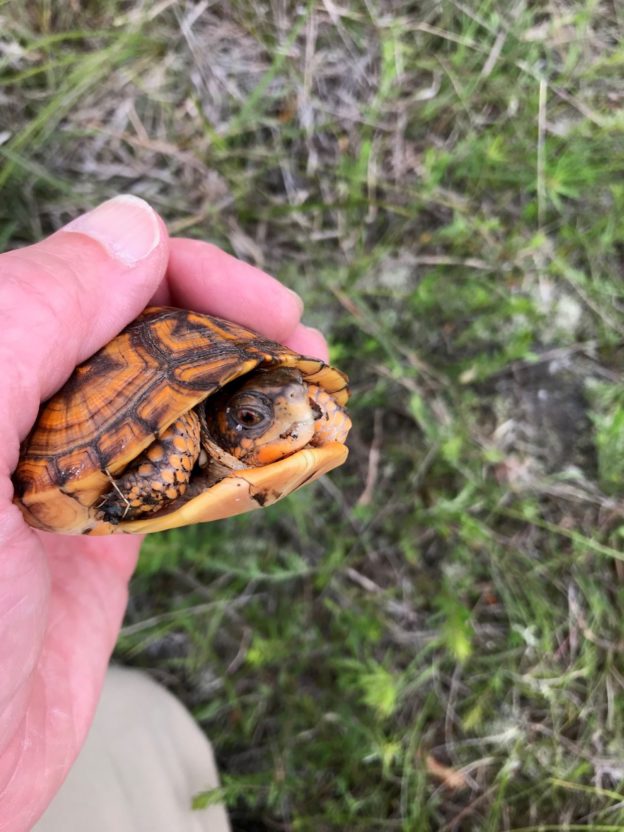The 2021 field season for monitoring and studying the sanctuary’s Eastern Box Turtle population has drawn to a close and it was a pretty exciting one! Our headstarted turtles continued to grow and we found more turtles we hadn’t seen before. We also recorded our first instance of flesh-eating flies.
Our headstarted box turtles, now four years old, put on some weight and really extended their range on the property as they began to explore and develop their own home territories. As is the case with young turtles, they are very good at staying hidden. Even with the radio transmitters attached to their shells, they can be difficult to locate.
One headstart turtle in particular (seen below) moved from Eastman’s Field and over to Goose Pond and then back. She ended up brumating (hibernation for reptiles) last October in nearly the same place as she did in 2020. This is also common for box turtles, which frequently exhibit brumation site fidelity.
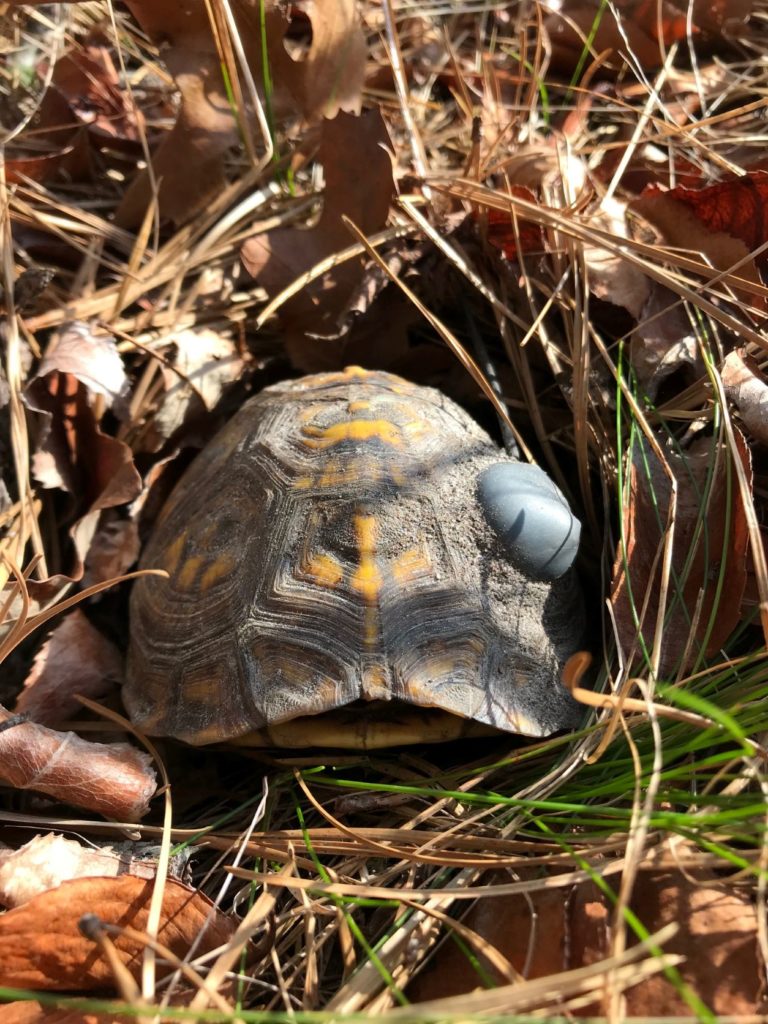
On a sad note, one of our headstarts died in brumation in its first winter. The cause remains a mystery. The digital temperature monitor placed into her brumation burrow to record the winter soil temperatures did not indicate that she was exposed to freezing temps in the burrow and her weight was good when she entered brumation. We don’t clearly understand the survivability of young turtles and particularly those that die during brumation. This is one of the box turtle mysteries we’d like to unlock.

One of the indicators of a healthy turtle population is juvenile recruitment, that is, the addition of new turtles to the population. At Wellfleet Bay we sometimes find young box turtles and adults that we have never recorded before. This is good because new turtles can provide some genetic diversity. This year we found a higher than usual number of new turtles. It’s possible in some cases they are just passing through and we’ll never see them again. But some of the young turtles we’ve discovered in past years are seen every year now and someday, we hope, will help keep our population stable.
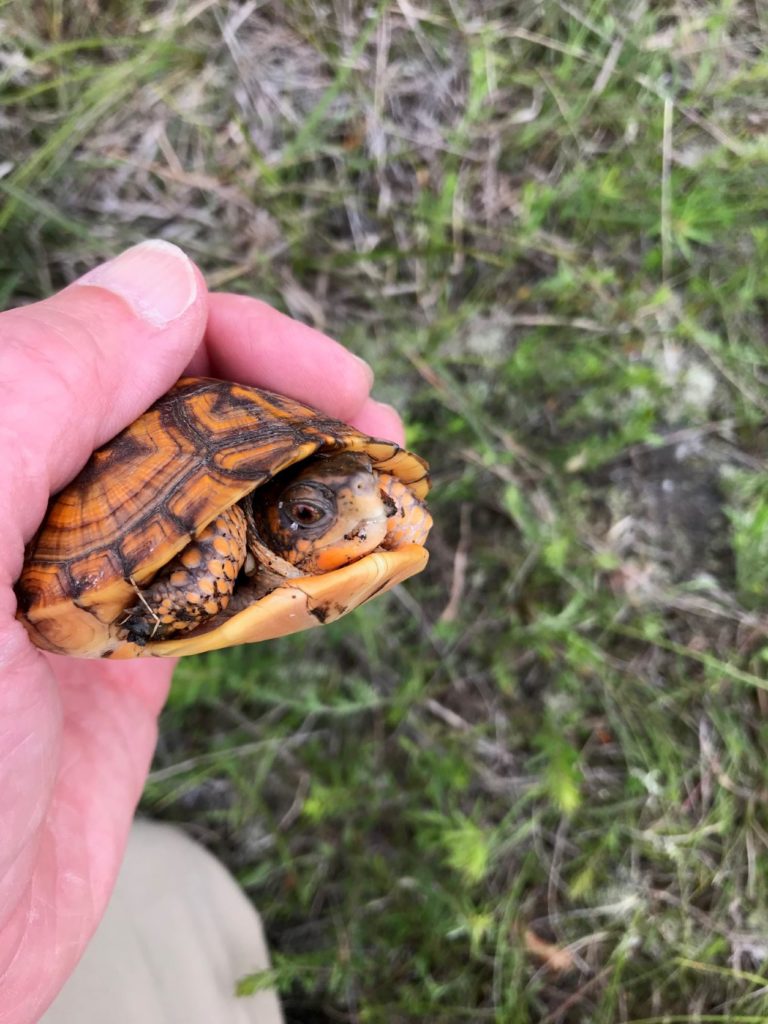
Something we haven’t seen at the sanctuary before—signs of flesh-eating flies. Box turtles can sometimes become infected with them. Late this season one turtle exhibited an exit hole from a sarcophagid or flesh-eating fly larvae. These flies, of which there are numerous species, use the box turtle (or other organism) as a host for their larvae to eat and develop within. This process is called “cutaneous myiasis” and it’s a natural one. Small localized infestations on a turtle are typically not an issue for a healthy animal, but more severe infestations can be serious. Are the flies just now coming to Wellfleet or have they always been here and we just missed them? We’ll pay close attention this question this coming summer.
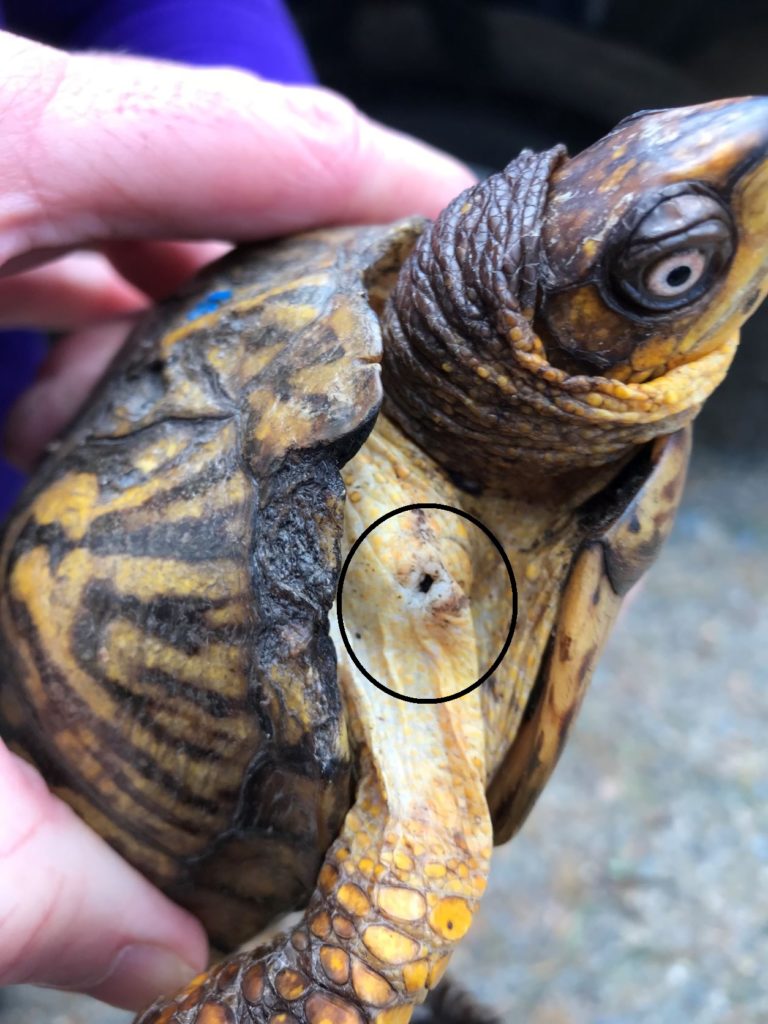
We reviewed the turtle found with myiasis with a reptile veterinarian and, happily, we determined that no larvae were present within the turtle. The larvae had completed that stage of their life cycle and left the host, so no medical intervention was required.
What’s on tap for box turtle monitoring in 2022? The continuation of our decades-old mark/recapture studies, the monitoring of our headstarts and, we hope, the creation of a searchable box turtle data base for the sanctuary. One thing is certain–there is always plenty of work to do!
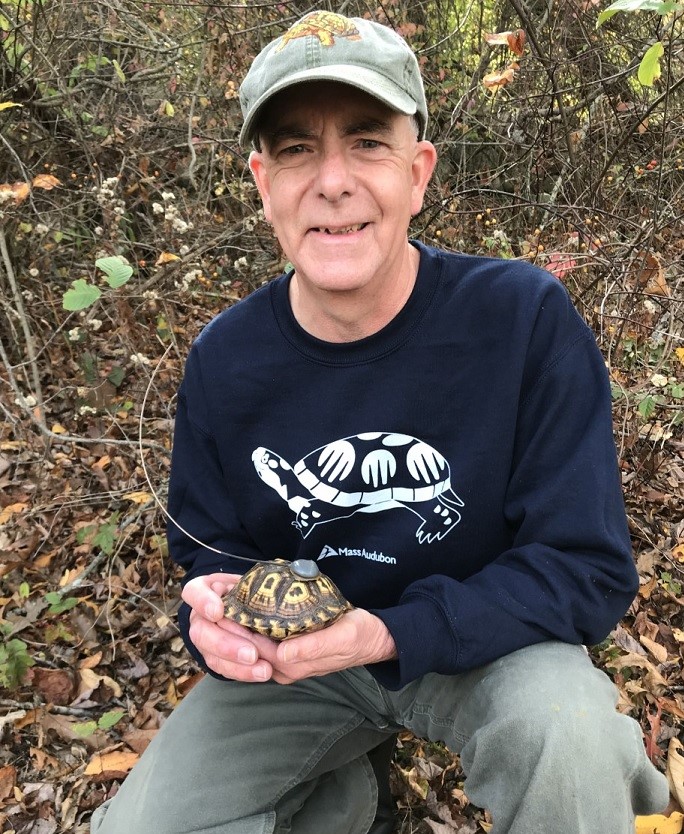
The following post was contributed by volunteer Tim O’Brien, a box turtle researcher. Tim, along with his wife Kim Novino, are also active sea turtle volunteers.


